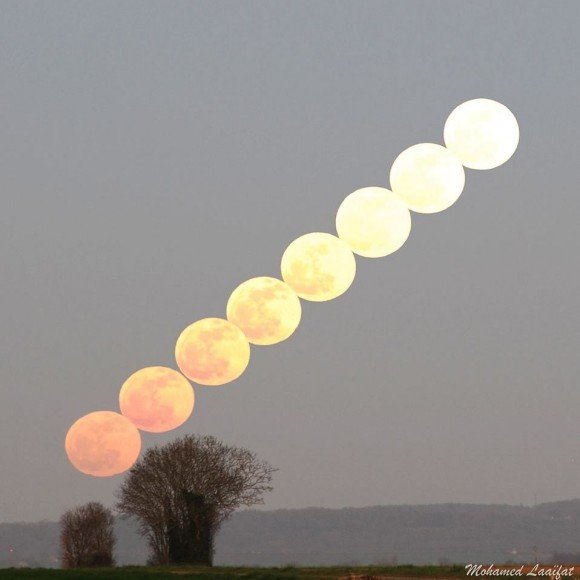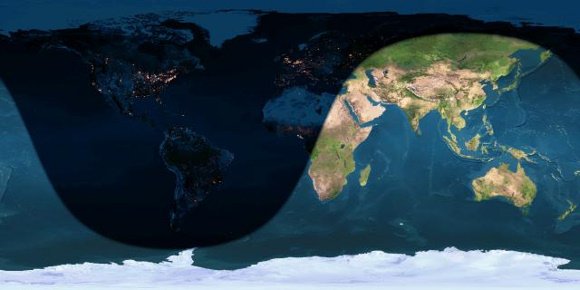
Full moonrise, above, by Mohamed Laaifat Photographies in Normandy, France.
Tonight, the moon is full. This full moon falls on January 5, 2015 at 4:53 Universal Time. Although the moon turns full at the same instant worldwide, the clock time — and possibly the date — differs by time zone. For the mainland United States, the moon reaches the crest of its full phase on this Sunday evening on January 4 at 11:53 p.m. EST, 10:53 p.m. CST, 9:53 p.m. MST or 8:53 p.m. PST.
The January 2015 full moon is the first full moon after the December 21 solstice. In North America, we often call this full moon the Wolf Moon, Old Moon or Moon After Yule.
Astronomically speaking, the moon is full at the moment that it's most opposite the sun in its orbit (180° from the sun in celestial or ecliptic longitude). For general reference, however, we can say the moon is full all night tonight, lighting up the nighttime from dusk until dawn.

Elsewhere around the world, the moon reaches the crest of its full phase at different times on the clock. Looking at the worldwide map below, you can see that the full moon comes at midnight in South America and northeastern North America, at sunrise in Africa and the Middle East and at noon in eastern Asia. All these places will see a full-looking moon lighting up the sky tonight from dusk until dawn.

Elsewhere around the world, the moon reaches the crest of its full phase at different times on the clock. Looking at the worldwide map below, you can see that the full moon comes at midnight in South America and northeastern North America, at sunrise in Africa and the Middle East and at noon in eastern Asia. All these places will see a full-looking moon lighting up the sky tonight from dusk until dawn.
But to see the moon at the instant of full moon, the moon has to be above your horizon on the nighttime side of the world.
In both the Northern and Southern Hemispheres, the January sun — unlike the January full moon — rises south of due east and sets south of due west. In the Northern Hemisphere, these far-southern risings and settings of the sun give us the short days of winter. South of the equator, the same far-southern sunrises and sunsets bring long summer days. Meanwhile, the full moon lies opposite the sun, mirroring the sun's place in front of the backdrop stars for six months hence.
And that's why tonight's moon — like the sun in summer — will follow a high path across the sky as seen from the northern part of the globe — and a low path as seen from the southern.
This January full moon rises north of due east around sunset, climbs highest in the sky around midnight and sets north of due west around sunrise.

Bottom line: Watch the full moon shine from sundown to sunup on the night of January 4, 2015.